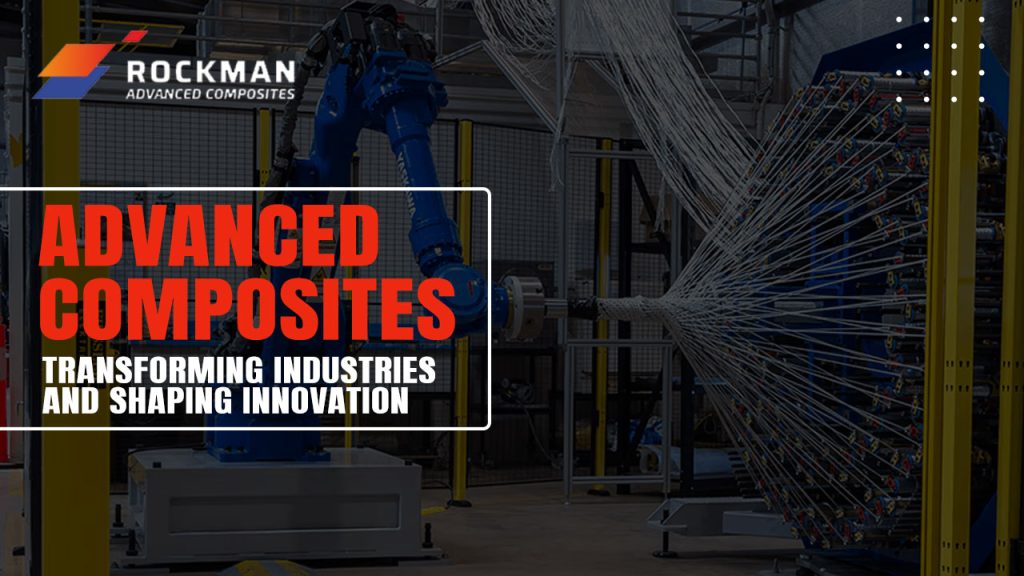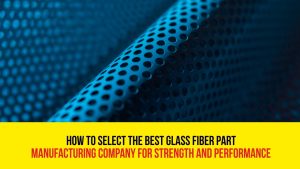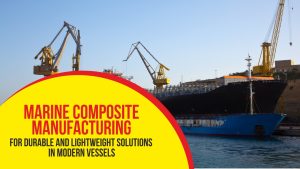Modern industries have become a cornerstone of society and are experiencing a major transformation through the use of advanced materials. Advanced composites are one such innovative material that is successfully catering to the unique demands and high-performance requirements of diverse industries and are redefining strength across multiple industries. Advanced composites are greatly in use in various industries where a material of great strength, durability, and specific performance characteristics is required. Advanced composites are used across diverse industries ranging from automotive, aerospace, marine, and construction to sports equipment, and many more.
Advanced Composites – Revolutionizing the Material Industry
Advanced composites are engineered materials designed using two or more constituent materials having different physical and chemical properties. These materials when combined form a material with different characteristics and boasting superior strength, durability, and lightweight properties. Advanced composites’ primary constituents are fibers like glass or carbon that provide strength and stiffness and a matrix that binds the fibers together. These advanced materials have transformed industries by introducing them to a new era of safety, efficiency, and performance. From reducing the weight of the products to increasing strength and durability, advanced composites are pushing the boundaries for different industries in terms of efficiency and capabilities and their major influence on worldwide industries.
Types of Advanced Composites
In recent years advanced composite materials have received widespread attention across diverse industries due to their excellent performance and broad engineering application prospects. This extremely popular material can be categorized into the following categories:
Fiber-Reinforced Composite Materials
These are characterised by embedding high-strength fiber materials like fiber or glass fiber in a continuous form in the matrix to provide reinforcement effects. These composites are strong yet lightweight and are ideal for the automotive and aerospace industries.
Laminated Composite Materials
These materials unlike the fiber-reinforced materials are alternately stacked with fiber layers with a different fiber direction and formed by pressing layer by layer. The laminated fibers arrangement in different directions allows the material to exhibit excellent mechanical properties in different directions. The properties like resistance to cracking and impact absorption of laminated composite make them ideal for sports equipment, marine, and wind energy sectors.
Matrix Composite Materials
These materials are formed by the combination of two or more different materials where one material serves as the matrix and other materials serve as filling or reinforcing materials. In this matrix material is metal or ceramic and the filling material is fiber, particle, or sheet-like material.
Other Composite Materials
These materials do not belong to any of these types and comprise composite materials with unique applications in fields like magnetorheological fluids, viscoelastic materials, cement mortar, etc.
The Properties of Advanced Composites
Advanced composites due to their range of properties are preferred over traditional materials in diverse industries. These materials are preferred for their exceptional strength-to-weight ratio, resistance to corrosion, and durability which make them popular across industries like automotive, aerospace, electronics, marine, and sports. Some of the valuable properties of this material include:
Lightweight with High Strength-to-Weight Ratio
Composites materials like carbon fiber are extremely light in weight but offer superior strength compared to steel or aluminium. These materials are around 70% lighter than steel and up to 25% lighter than aluminium. This property proves particularly valuable in industries like automotive and aerospace, where the focus is on reducing weight, enhancing fuel efficiency, and reducing greenhouse gas emissions. These industries are heavily relying on carbon fiber composites to reduce the weight of vehicles and aircraft.
Corrosion and Chemical Resistance
Advanced composites are known for their properties like resistant to corrosion and remain unaffected by chemicals. Thus, these materials have extended lifespans in environments where other materials easily deteriorate. Since these materials do not rust or corrode and are resistant to high temperatures, these materials have long lifespans, resist fatigue, and withstand harsh weather conditions.
Design Flexibility
Advanced composites give manufacturers greater freedom and flexibility in shaping and structuring different components for industries. This flexibility allows manufacturers to create components and parts of complex designs that would otherwise be challenging or costly to achieve with metals.
Durability and Low Maintenance
Advanced composites experience less wear and tear over time compared to metals, hence requiring reduced maintenance costs and a longer life cycle.
Conclusion
Advanced composites are transforming the world by offering innovative solutions that are hard to achieve with conventional materials. These materials play a significant role in diverse industries and are responsible for making energy-efficient vehicles, lighter aircraft, and resilient infrastructure, the possibilities are endless. With technologies pushing the boundaries of composite technology and addressing cost and sustainability challenges, it is likely to see advanced composites playing an even more pivotal role in shaping the future of industries as well as our everyday lives.








